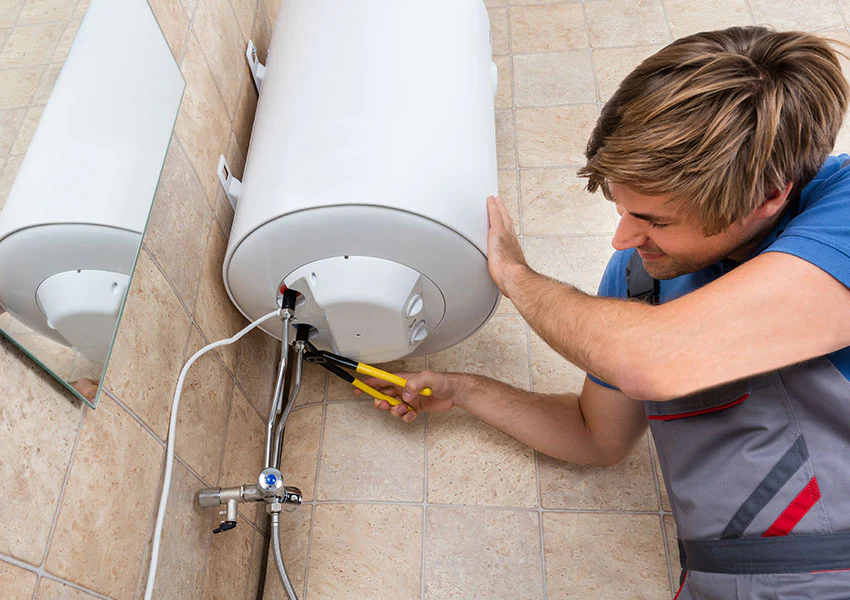Easy Methods to Care for Your Home's Hot Water System EffectivelySpecialist Advice for Maintaining Your Home's Hot Water System
Easy Methods to Care for Your Home's Hot Water System EffectivelySpecialist Advice for Maintaining Your Home's Hot Water System
Blog Article
We have come across this great article pertaining to How to Maintain a Hot Water Heater in a Few Simple Steps directly below on the web and figured it made sense to quickly share it with you on this page.

Warm water is vital for day-to-day convenience, whether it's for a rejuvenating shower or cleaning meals. To ensure your warm water system runs efficiently and lasts much longer, normal maintenance is crucial. This article offers sensible tips and understandings on exactly how to keep your home's hot water system to prevent disturbances and costly repair work.
Intro
Keeping your home's hot water system may appear overwhelming, but with a couple of straightforward steps, you can ensure it runs efficiently for several years to come. This guide covers every little thing from recognizing your hot water system to DIY upkeep pointers and knowing when to hire expert assistance.
Relevance of Keeping Your Warm Water System
Regular maintenance not only prolongs the life expectancy of your warm water system yet also guarantees it runs effectively. Neglecting upkeep can cause reduced effectiveness, greater power costs, and even early failing of the system.
Indicators Your Warm Water System Demands Upkeep
Recognizing when your warm water system requires focus can prevent major problems. Look out for indications such as inconsistent water temperature, unusual sounds from the heater, or rusty water.
Understanding Your Hot Water System
Before diving into maintenance tasks, it's helpful to understand the basic components of your hot water system. Typically, this includes the water heater itself, pipelines, anode poles, and temperature level controls.
Month-to-month Upkeep Tasks
Routine regular monthly checks can assist catch minor issues before they rise.
Purging the Hot Water Heater
Purging your hot water heater eliminates sediment buildup, improving efficiency and lengthening its life.
Monitoring and Changing Anode Rods
Anode rods avoid corrosion inside the container. Evaluating and changing them when worn is important.
Inspecting and Readjusting Temperature Level Settings
Changing the temperature settings makes certain optimum efficiency and safety.
DIY Tips for Upkeep
You can do a number of maintenance jobs on your own to keep your warm water system in leading condition.
Checking for Leakages
Routinely evaluate pipes and connections for leakages, as these can cause water damage and greater expenses.
Evaluating Stress Alleviation Valves
Evaluating the stress safety valve ensures it operates properly and prevents too much pressure buildup.
Shielding Pipes
Insulating warm water pipes lowers warm loss and can conserve energy.
When to Call a Specialist
While do it yourself maintenance is valuable, some issues need professional expertise.
Complicated Concerns Needing Specialist Assistance
Examples consist of major leakages, electrical issues, or if your water heater is constantly underperforming.
Regular Expert Maintenance Conveniences
Expert upkeep can include detailed assessments, tune-ups, and ensuring compliance with safety and security criteria.
Final thought
Regular upkeep of your home's hot water system is essential for performance, longevity, and price savings. By following these ideas and recognizing when to seek specialist assistance, you can ensure a trusted supply of hot water without unanticipated interruptions.
Water Heater Maintenance Tips
Test the TPR Valve
Shut off the power and the cold-water supply valve. Place a bucket under the pipe connected to the temperature-pressure-release (TPR) valve on the top or side of the tank. (This valve opens if the tank pressure gets too high.) Lift the valve’s tab to let some water out, then let go. If water keeps flowing, drain the tank partway, unscrew the old valve with a pipe wrench, and install a new one. Check the Anode Rod
Put a hose to the tank’s drain cock and let out a few gallons of water. Now fit a 1 1/16-inch socket onto the rod’s hex head on top of the heater (or under its top plate) and unscrew the rod. If it’s less than ½ inch thick or coated with calcium, buy a new one, wrap its threads with Teflon tape, put it back in the tank, and tighten securely. Use this segmented rod if headroom above the tank is limited. Drain the Tank and Wash Out Sediment
Drain the remaining water in the tank into the bucket, then stir up the sediment on the tank’s bottom by briefly opening the cold-water supply valve. Drain and repeat until clean water comes out of the hose. Close the drain cock, refill the tank, and turn its power back on. Adjust the Temperature
Find the temperature dial on the side of the tank and unscrew its cover. Adjust the dial to 120 degrees using a flathead screwdriver. For every 10 degrees the temperature is lowered, you can expect to save up to 5 percent in energy costs. Turn the water heater off or the thermostat down to its lowest setting if you plan to be away from home for more than three days. Insulate the Pipes
Buy some self-sticking 3/8-inch-thick foam pipe insulation that matches the pipes’ diameter. Slide the foam over the hot-and cold-water pipes as far as you can reach. Insulating the cold-water pipe prevents condensation in summer. Peel the tape and squeeze the insulation closed. If the pipe is 6 inches or less from the flue, cover it with 1-inch-thick unfaced fiberglass pipe wrap. https://www.thisoldhouse.com/plumbing/21016402/how-to-maintain-a-water-heater

Hopefully you liked our post on What Kind of Maintenance Do Water Heaters Need?. Thanks a ton for taking a few minutes to read our content. Sharing is good. Helping people is fun. We treasure your readership.
Apply Now Report this page